- Home
- V. S. Naipaul
India: A Million Mutinies Now
India: A Million Mutinies Now Read online
Praise for V.S. Naipaul’s
India: A Million Mutinies Now
“Compassionate.… Leaves the reader with a powerful sense of [a] people’s dedication, perseverance and passion.”
—The New York Times
“Travel writing, history, novel, lyric—Naipaul’s book partakes of the excellence of every category and fulfills itself in one of the oldest and rarest of forms—prophecy. It bears witness, in unforgettable language, to the best of hopes in the worst of times.”
—The Christian Science Monitor
“Naipaul has retired the familiar, infuriating, immobile face of India and painted a fresh one of human spirit and dramatic change.”
—Time
“A shifting kaleidoscope of images of a country almost impossible to imagine, but made more comprehensible due to Naipaul’s formidable intelligence and prodigious narrative gifts.”
—Boston Sunday Herald
“Naipaul creates his India slowly, through whole life-stories told in the characters’ own voices.… The detail is wonderful, built up with impeccable care.”
—The Economist
“[Naipaul] has invaluably revealed the brink on which India now stands, the sources of all that rage and all those little mutinies.… There is a powerful feeling of change in this book.”
—Los Angeles Times
“Compelling, almost hypnotic.… A rich, multilayered portrait of a nation we know far too little about in the West. You will feel you have learned much about India, yet you will sense how much more—how very much more—remains to be learned.”
—The Seattle Times
“Authentic.… These narratives record, in human terms, the rich and disturbing diversity of contemporary India.… Extraordinary.”
—Newsday
“There is a great temptation to quote too much of Naipaul, for in reading the novelist, essayist and travel writer we realize the accuracy of those who consider him one of the finest writers in the language; a man with intense intellectual curiosity, as well as an inherited sympathy for inhabitants of the Third World.”
—The Oregonian
“A superb raga of a book, a raga of morning curiosity and evening meditation.… This may be [Naipaul’s] most generous work, and his best nonfiction.”
—The San Diego Union-Tribune
“An absorbing journey through the mind of India.… Mutinies will surprise those who have read and ranted at Naipaul’s earlier books on India.”
—St. Petersburg Times
“Brilliant.”
—The Spectator (London)
“In-depth.… Beautifully written, this book gives a personal look at the societal and political forces pushing for change in the country.”
—Minneapolis Star Tribune
“Prescient.… Naipaul’s intuitions and indefatigable on-the-spot research were well ahead of the academic reaction.… [He is] a writer who will always be read—and not just by academics—for his intelligence and insight and for the clarity and elegance of his style.”
—The Times Higher Education Supplement
“One of the most intelligent writers of our time.… Naipaul’s word-pictures of India are lyrical, spare, precise and vivid.… He succeeds—brilliantly—in integrating India’s individual truths with a larger picture of the country.”
—The Toronto Star
V. S. NAIPAUL
India: A Million Mutinies Now
V. S. Naipaul was born in Trinidad in 1932. He went to England on a scholarship in 1950. After four years at University College, Oxford, he began to write, and since then has followed no other profession. He has published thirty books of fiction and nonfiction, including A House for Mr. Biswas, A Bend in the River, A Turn in the South, and a collection of letters, Between Father and Son. He was awarded the Nobel Prize in Literature in 2001.
ALSO BY V. S. NAIPAUL
Nonfiction
The Masque of Africa
A Writer’s People
Literary Occasions
The Writer and the World
Between Father and Son: Family Letters
Beyond Belief: Islamic Excursions Among the Converted Peoples
A Turn in the South
Finding the Center
Among the Believers
The Return of Eva Perón (with The Killings in Trinidad)
India: A Wounded Civilization
The Overcrowded Barracoon
The Loss of El Dorado
An Area of Darkness
The Middle Passage
Fiction
Collected Short Fiction
Magic Seeds
Half a Life
A Way in the World
The Enigma of Arrival†
A Bend in the River
Guerrillas
In a Free State
A Flag on the Island†
The Mimic Men
Mr. Stone and the Knights Companion†
A House for Mr. Biswas
Miguel Street*
The Suffrage of Elvira* †
The Mystic Masseur* †
* Published in an omnibus edition entitled Three Novels
† Published in an omnibus edition entitled The Nightwatchman’s Occurrence Book
FIRST VINTAGE INTERNATIONAL EDITION, MARCH 2011
Copyright © 1990, 2011 by V. S. Naipaul
All rights reserved. Published in the United States by Vintage Books, a division of Random House, Inc., New York. Originally published in slightly different form in Great Britain by William Heinemann Ltd, London, in 1990, and subsequently published in hardcover, in the United States by Viking Penguin, a division of Penguin Books USA, Inc., New York, in 1991.
Vintage is a registered trademark and Vintage International and colophon are trademarks of Random House, Inc.
Library of Congress Cataloging-in-Publication Data
Naipaul, V. S. (Vidiadhar Surajprasad), 1932–
India : a million mutinies now / V. S. Naipaul.—1st Vintage International ed.
p. cm.
Originally published: London : Heinemann, 1990.
1. India—Description and travel. I. Title.
DS414.2.N35 2011
915.404′52—dc22
2010038312
eISBN: 978-0-307-74278-0
www.vintagebooks.com
Cover art © Achok Sinha / Getty Images
v3.1
Contents
Cover
About the Author
Other Books by This Author
Title Page
Copyright
Preface
1 Bombay Theatre
2 The Secretary’s Tale: Glimpses of the Indian Century
3 Breaking Out
4 Little Wars
5 After the Battle
6 The End of the Line
7 Woman’s Era
8 The Shadow of the Guru
9 The House on the Lake: A Return to India
Acknowledgements
Preface
India: a Million Mutinies Now is a long book, one of my longest. Long books (it has to be said) are harder to write than short books, and I have more than a certain regard for this one. Twenty years after the writing I still have a clear memory of the labour and the ambition.
I thought when I began to write that I would do fiction alone. To be a writer of the imagination seemed to me the noblest thing. But after a few books I saw that my material—the matter in my head, the matter in the end given me by my background—would not support that ambition.
The ambition itself had been given me by what I knew of the great nineteenth-century novels of Europe, or what I thought I knew of them. I put it in that cautious way because before I began to w
rite I actually hadn’t read a great deal. I saw now—something I suppose I had always sensed but never worked out as an idea—that those novels had come out of societies more compartmented, more intellectually ordered and full of conviction than the one I found myself in. To pretend that I came out of a society as complete and ordered would in some ways have made writing easier. The order I am talking about is, to put it at its simplest, the order, the fenced-in setting, that underpins the television situation comedy. The rules of the fenced-in world are few and easily understood; the messy outside world doesn’t intrude to undo the magic. I could have tried to write like that. But I would not have got very far. I would have had to simplify too much, leave out a lot. It would have been to deny what I saw as my task as a writer.
I had to be true to my own world. It was more fluid, harder to pin down and to present to a reader in any accepted, nineteenth-century way. Every simple statement I could make about myself or my family or background had to be qualified in some way.
I was born in 1932 on the other side of the Atlantic in the British colony of Trinidad. Trinidad was an outcrop of Venezuela and South America. It was a small island, essentially agricultural when I was born (Trinidad, like Venezuela, had oil, which was beginning to be developed). It had a racially mixed population of perhaps half a million, with my own immigrant Asian Indian community (finely divided by religion, education, money, caste background) about a hundred and fifty thousand. (I have rehearsed these matters elsewhere, but I feel they should be stated here again, for this occasion.)
I had no great love for the place, no love for its colonial smallness. I saw myself as a castaway from the world’s old civilisations, and I wished to be part of that bigger world as soon as possible. An academic scholarship in 1950, when I was eighteen, enabled me to leave. I went to England to do a university course, with the ambition afterwards of being a writer. I never in any real sense went back.
So my world as a writer was full of flight and unfinished experience, full of the odds and ends of cultures and migrations, from India to the New World in 1880–1900, from the New World to Europe in 1950, things that didn’t make a whole. There was nothing like the stability of the rooted societies that had produced the great fictions of the nineteenth century, in which, for example, even a paragraph of a fairytale or parable by Tolstoy could suggest a whole real world. And soon, as I have said, I saw myself at the end of the scattered island material I carried with me.
But writing was my vocation; I had never wished to be anything but a writer. My practice as a writer had deepened the fascination with people and narrative which I had always had, and increasingly now, in the larger world I had wanted to join, that fascination was turning into a wish to understand the currents of history that had created the fluidity of which I found myself a part. It was necessary for me as a writer to engage with the larger world. I didn’t know how to set about it; there was no example I could follow.
The practice of fiction couldn’t help me. Fiction is best done from within and out of great knowledge. In the larger world I was an outsider; I didn’t know enough and would never know enough. After much hesitation and uncertainty I saw that I had to deal with this world in the most direct way. I had to go against my practice as a fiction writer. I had to use the tools I had developed to record my experience as truthfully as possible. So there came this divide in my writing: free-ranging fiction and scrupulous nonfiction, one supporting and feeding the other, complementary aspects of my wish to get to grips with my world. And though I had started with the idea of the nobility of the writer of the imagination, I do not now rate one way above the other.
In the practising of this new way I had to deal first of all with my ancestral land, India. I was not an insider, even after many months of travel; nor could I consider myself an outsider: India and the idea of India had always been important to me. So I was always divided about India, and found it hard to say a final word. In all I have written three books about India. They are nonfiction, as they had to be, but they are as personal and varied and deeply felt as any work of fiction could be. India: A Million Mutinies Now was the third of those Indian books. It was written twenty-six years after the first. It had taken the writer all that time to go beyond personal discovery and pain, and analysis, to arrive at the simple and overwhelming idea that the most important thing about India, the thing to be gone into and understood, and not seen from the outside, was the people.
The book was dedicated to a further idea: that India was, in the simplest way, on the move, that all over the vast country men and women had moved out of the cramped ways and expectations of their parents and grandparents, and were expecting more. This was the “million mutinies” of the title; it was not guerrilla wars all round. Nearly every English-speaker would have some idea of the brief Indian Mutiny of 1857 when some mercenary Indian soldiers of the British East India Company, confused and angry, but with no clear end in view, mutinied against the British. The million mutinies of my title suggests that what is happening now is a truer and more general way ahead.
This seems a reasonable thing to say now, in 2010, at the time of an acknowledged Indian boom. It was different in 1988, when I began the book. India was full of a pietistic Gandhian gloom, self-satisfied and rather happy as this kind of gloom often is in India. The talk among the talkers in the towns was of degeneracy, a falling away from the standards of earlier times: politics were being criminalised, and there was corruption everywhere. Standard stuff, not profound, not based on any real knowledge of the country; but it could undermine one. It was the background against which I worked out my idea of the mutinies.
The idea didn’t come to me out of the air. I had done a lot of hard travelling in India in the past twenty-six years. As a writer, a free man, I had picked up a more varied knowledge of the country than most Indians, who were bound to their families and jobs. I had spent many weeks in the districts, away from the big towns. With the help and hospitality of Indian friends and officials I had been able in various places to enter, if only for a week or two at a time, the life of the bare and sometimes forbidding Indian countryside. I had been granted some knowledge of small-town life. I had not always written of what I had seen. So my experience had banked up, and the idea now came to me of expanding on that experience and doing a large book, full of people, an Indian panorama which (since I believe that the present, accurately seized, foretells the future) would contain or explain in a broad way most of what might happen in the country for the next twenty or thirty years. This was what I told my English publishers. They liked the idea; they bought it after ten minutes, quite literally; and not many days after that I found myself in the Taj Mahal Hotel in Bombay, marvelling at my ambition, and not really sure how I was to come to a human understanding of the enormous city (such an apparently impenetrable afternoon crowd just outside, moving about the Gateway of India, beside the tarnished Arabian Sea). And, of course, behind the city there was the country: memories for me, alarming now, of endless sunstruck journeys by road and rail.
I had four blank, frightening days in the glamorous hotel, during which I did the dispiriting thing of keeping a self-conscious journal with nothing to say. I didn’t like the journal form; it blurred vision. I preferred distance, and the sifting of memory. The comparison that comes to mind now is that of Ibsen, still more poet than playwright, struggling to keep a journal on his trip to the opening of the Suez Canal in 1869. Momentous days, fabulous sights: made for a journal, one would have thought; but it must have fatigued Ibsen to be on the outside, dealing only with the externals of things; and he simply stopped. In some such way in Bombay I broke down and gave my dour journal up; and looked around to make another kind of start.
A big board in the hotel lobby advertised a resident or “in-house” fortune-teller; I was often tempted in those four days to go for a reading, to find out whether I would do the book. I didn’t have to do that. One does more in anxiety than one suspects. The book did get started—“Bombay is a cro
wd” is the opening line I alighted on—and then it moved fast.
Ideas are abstract. They become books only when they are clothed with people and narrative. The reader, once he has entered this book and goes beyond the opening pages, finds himself in a double narrative. There is the immediate narrative of the person to whom we are being introduced; there is the larger outer narrative in which all the varied pieces of the book are going to fit together. Nothing is done at random. Serious travel is an art, even if no writing is contemplated; and the special art in this book lay in divining who of the many people I met would best and most logically take my story forward, where nothing had to be forced.
I had to depend on local people for introductions, and it was not always easy to make clear what I was looking for. Many people, trained in journalistic ways, thought I was looking for “spokesmen” for various interests. I was in fact looking for something profounder and more intrusive: someone’s lived experience (if I can so put it) that would illuminate some aspect, some new turn, in the old country’s unceasing adjustment to new thought, new politics, new ideas of business. So in this book one kind of experience grows out of another, one theme develops out of another.
Part of my luck was the decision, made for no clear reason one day in the Taj Mahal Hotel in Bombay, to do the religiously inauspicious Indian thing and travel round India in an anticlockwise direction. To have gone the other way, north, to Delhi and Calcutta and the Punjab would have been to get to the meat of the book too quickly, to leave the rest of the country hanging on, in a kind of anti-climax. To go south first, as I did, was to deal in a fresh way with important things like the influence of caste on the development of Indian science, the little known century-long caste war of the south, the dispossession of the brahmins. This could be said to prepare the reader (and the writer) for the disturbances of the north: the British in Calcutta, Lucknow, Delhi: all the history of the past century, just below the present.

 The Masque of Africa: Glimpses of African Belief
The Masque of Africa: Glimpses of African Belief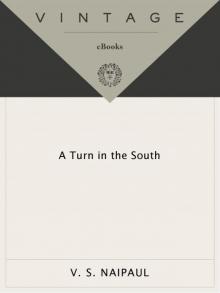 A Turn in the South
A Turn in the South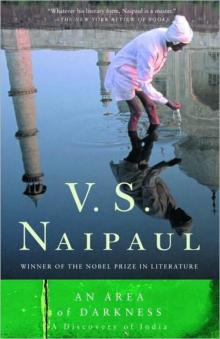 An Area of Darkness
An Area of Darkness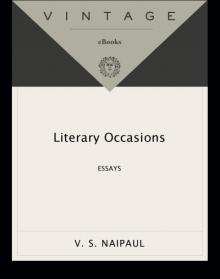 Literary Occasions: Essays
Literary Occasions: Essays A Way in the World
A Way in the World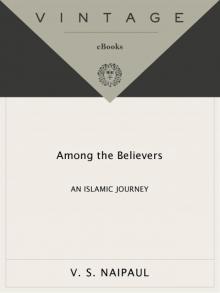 Among the Believers: An Islamic Journey
Among the Believers: An Islamic Journey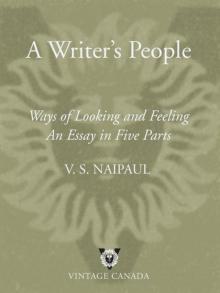 A Writer's People: Ways of Looking and Feeling
A Writer's People: Ways of Looking and Feeling The Mimic Men: A Novel
The Mimic Men: A Novel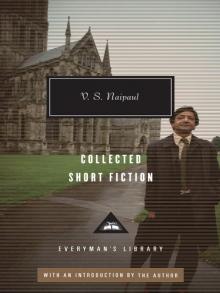 Collected Short Fiction
Collected Short Fiction India: A Million Mutinies Now
India: A Million Mutinies Now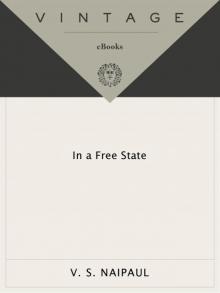 In a Free State
In a Free State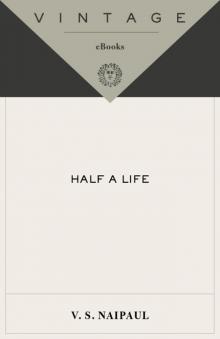 Half a Life
Half a Life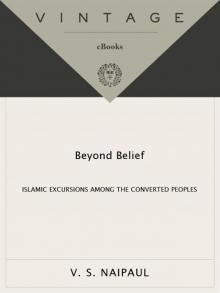 Beyond Belief: Islamic Excursions Among the Converted Peoples
Beyond Belief: Islamic Excursions Among the Converted Peoples Guerrillas
Guerrillas A House for Mr. Biswas
A House for Mr. Biswas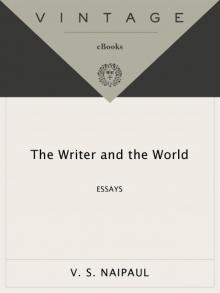 The Writer and the World: Essays
The Writer and the World: Essays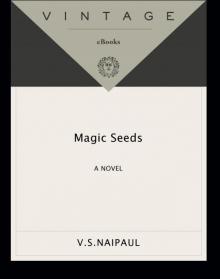 Magic Seeds
Magic Seeds The Mystic Masseur
The Mystic Masseur Miguel Street
Miguel Street The Return of Eva Perón, With the Killings in Trinidad
The Return of Eva Perón, With the Killings in Trinidad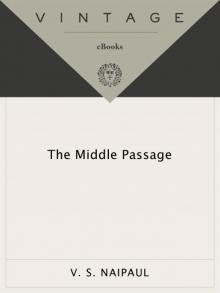 The Middle Passage
The Middle Passage A Bend in the River
A Bend in the River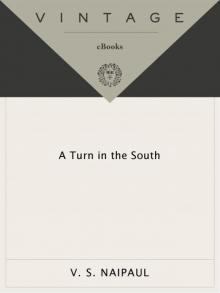 A Turn in the South (Vintage International)
A Turn in the South (Vintage International)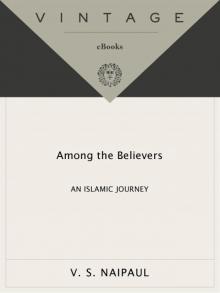 Among the Believers
Among the Believers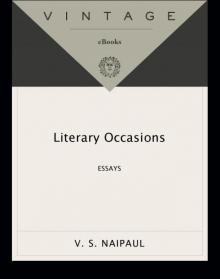 Literary Occasions
Literary Occasions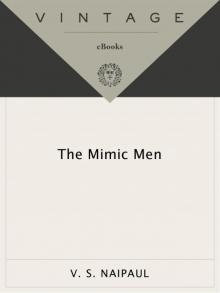 The Mimic Men
The Mimic Men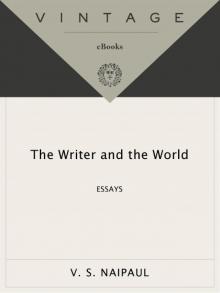 The Writer and the World
The Writer and the World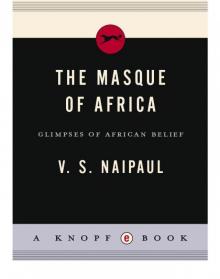 The Masque of Africa
The Masque of Africa